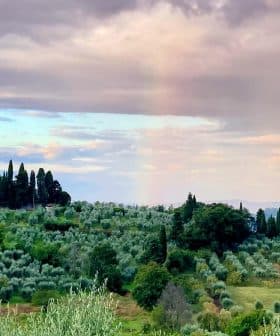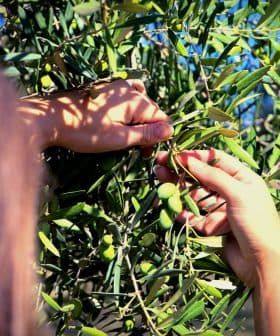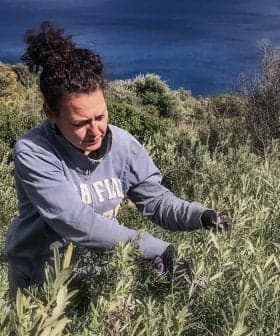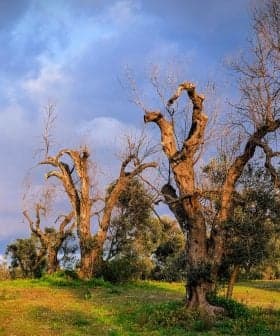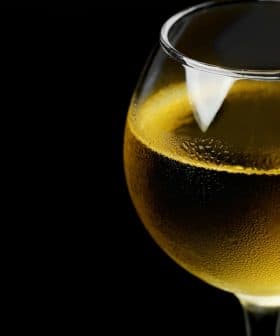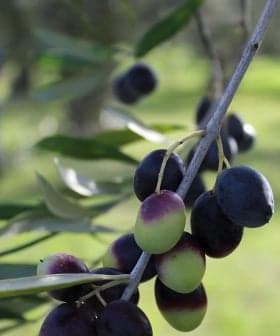Only Extra Virgin Olive Oil at Rome's Forno Campo de’ Fiori
The Forno Campo de’ Fiori in Rome uses high-quality extra virgin olive oil in their popular bakery, mainly for their pizza bianca. The bakery, owned by Fabrizio Roscioli, is known for its traditional breads, baked goods, and sandwiches made with olive oil. The olive oil used is purchased from a cooperative in Canino, and the bakery attracts visitors from around the world, including bakers looking to learn from their techniques.
The Forno Campo de’ Fiori uses between twenty-five and thirty liters of extra virgin olive oil a day. It’s mainly used for the pizza, but also for pane all’olio, ciambelline al vino, castagnaccio, and for sandwiches. Pizza bianca is by far the biggest seller at this popular forno. The excellent quality of the olive oil is key to the excellence of the pizza.
“I’m Marchigian. Most bakers in Rome are from the Marche. A rosciolo is a kind of fish which evidently my ancestors liked a lot,” says Fabrizio Roscioli owner of the Forno Campo de’ Fiori. He, together with a cousin, owns the enormously popular bakery that was started by his father and uncle. In the 1950s his uncle introduced sliced bread from America and achieved certain fame for this in Rome. A few streets away, on Via dei Chiavari, there is another Roscioli bakery. It’s called the Antico Forno Marco Roscioli and belongs to a different branch of the family.
 What is known in Rome as pizza bianca, or white pizza, is called “focaccia” in other parts of Italy and the world. Customers who mean to bring the pizza bianca home invariably find themselves pulling warming pieces from the bag. The forno also makes pizzas which generally feature one or two ingredients. There’s a pizza rossa which has a thin film of brightly flavored tomato purée without cheese. There are others with tomato and cheese, or prosciutto, or potatoes, or eggplant, or zucchini, or mushrooms. One of the most delicious and beautiful to look at is made with zucchini flowers, which have been cut lengthwise and opened flat, and then arranged on the dough with anchovy pieces, cheese and extra virgin olive oil.
What is known in Rome as pizza bianca, or white pizza, is called “focaccia” in other parts of Italy and the world. Customers who mean to bring the pizza bianca home invariably find themselves pulling warming pieces from the bag. The forno also makes pizzas which generally feature one or two ingredients. There’s a pizza rossa which has a thin film of brightly flavored tomato purée without cheese. There are others with tomato and cheese, or prosciutto, or potatoes, or eggplant, or zucchini, or mushrooms. One of the most delicious and beautiful to look at is made with zucchini flowers, which have been cut lengthwise and opened flat, and then arranged on the dough with anchovy pieces, cheese and extra virgin olive oil.
The vegetables are sliced very thinly and set raw on the dough before being put in the oven. Large and loaded paintbrushes are used to spatter the pizzas with extra virgin olive oil. It is applied to the pizza bianca both before and after its time in the oven. The bakers work in streamlined and rhythmic motion, faster than the machines they work with.
Roscioli buys the extra virgin olive oil from the Coop Olivicola di Canino, a cooperative with 130 members in Canino, a town about two hours north of Rome on the Tyrrhenian side. The oil has a grassy taste. The canino cultivar, close to indigenous to the area, produces a small and late olive. It’s late fruiting protects it somewhat from the scourge of the olive fly, and from the need for pesticides. Rosicioli uses 5‑liter tins at the bakery and sells the DOP version in bottles at the bakery.
Gina Simonovic makes the sandwiches for the shop. Olive oil and salt go on many types of sandwiches; in much the same way mayonnaise might in other parts of the world. A prosciutto and cheese panino would not need any oil since it has enough fat. When we visited, Simonovic made frittata for the sandwiches. She made two frittatas, one with artichokes and the other with spinach. The ingredients were: the cooked vegetable, eggs, extra virgin olive oil, milk, flour, salt, and additional olive oil for the pan. Gina said that the flour was added to keep the frittata in good shape for a few hours, but for a frittata that would be eaten immediately, say at home, it wasn’t necessary.

Like bakeries everywhere, this forno produces traditional breads and baked goods to follow the feast days and seasons. Roasted and salted almonds are a staple of bakeries in Italy. Fortunately these are available throughout the year. The forno specializes in wonderful almond paste cookies, sometimes with pine nuts on top, and sometimes with orange rind or cherries inside. Fabrizio Roscioli likes to highlight the fact that the sweets are based on taste more than visual appeal.
The bakery occupies two separate ground floor spaces on the piazza, straddling Via dei Cappellari. The place is easily spotted at lunchtime when people are lining up for pizza and then happily eating it warm from brown paper packets. Little children are given a thin strip of pizza to eat as parents order. Roscioli says that his father started this tradition thirty years ago.
The forno keeps traditional hours, opening in the morning, closing after lunch, to reopen in the late afternoon until dinner time. The Campo de’ Fiori is a hot spot for young people until way into the early morning, and the forno could stay open, but Roscioli chooses to forgo selling to the drink-happy hordes.
While we were looking around the bakery and trying to keep out of the way of the very busy and intent employees, a couple of them wanted to know if we were asking questions for our own baking business. Bakers from all over the world come to visit Roscioli and his staff of 22 bakers, cooks, and counter workers. Mark Lahey of the famed Sullivan Street bakery in NYC learned to make pizza from Roscioli. Most recently Roscioli has been consulting with Farinella, also in NYC, and with Spianata in London.
Forno Campo De’ Fiori
Campo de’ Fiori, 22
Vicolo del Gallo, 14
00186 Rome, Italy
tel. (+39) 06 688 06 662


